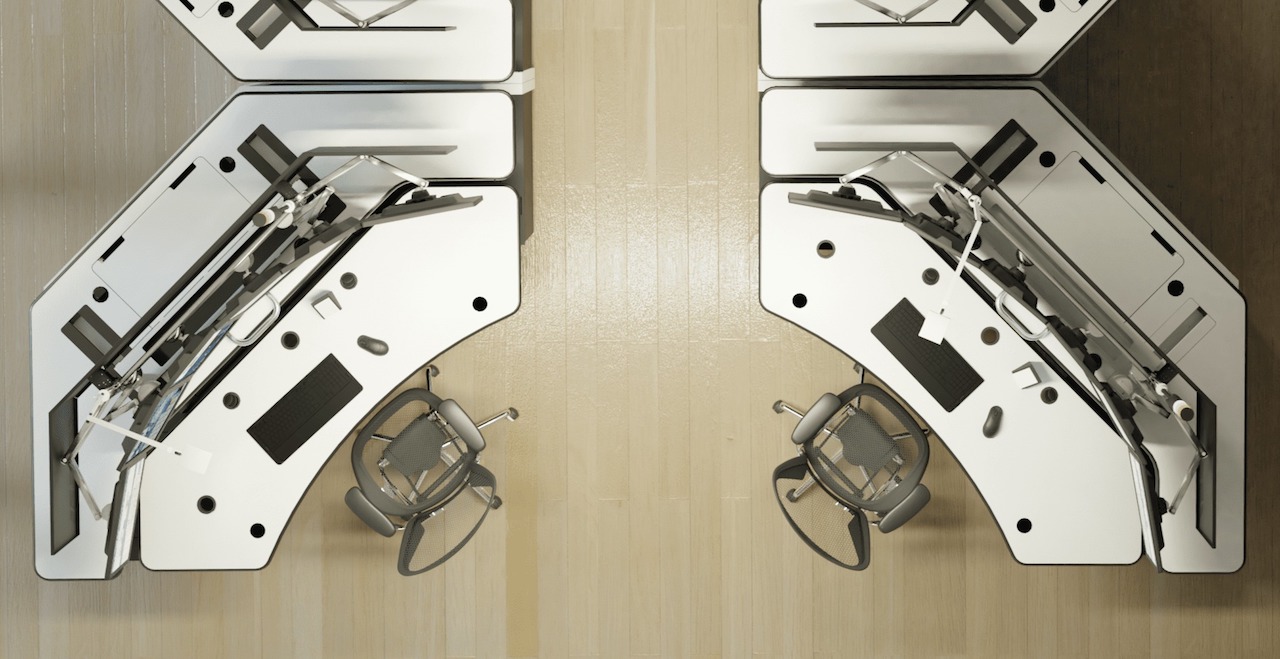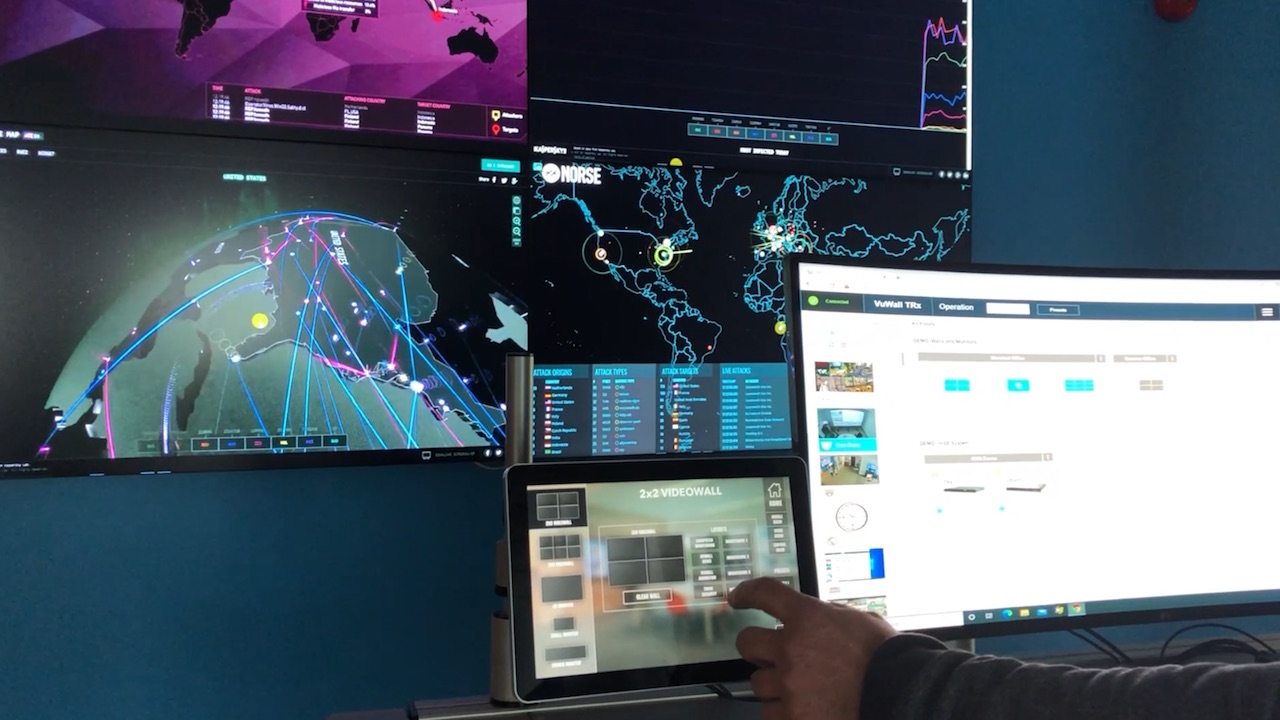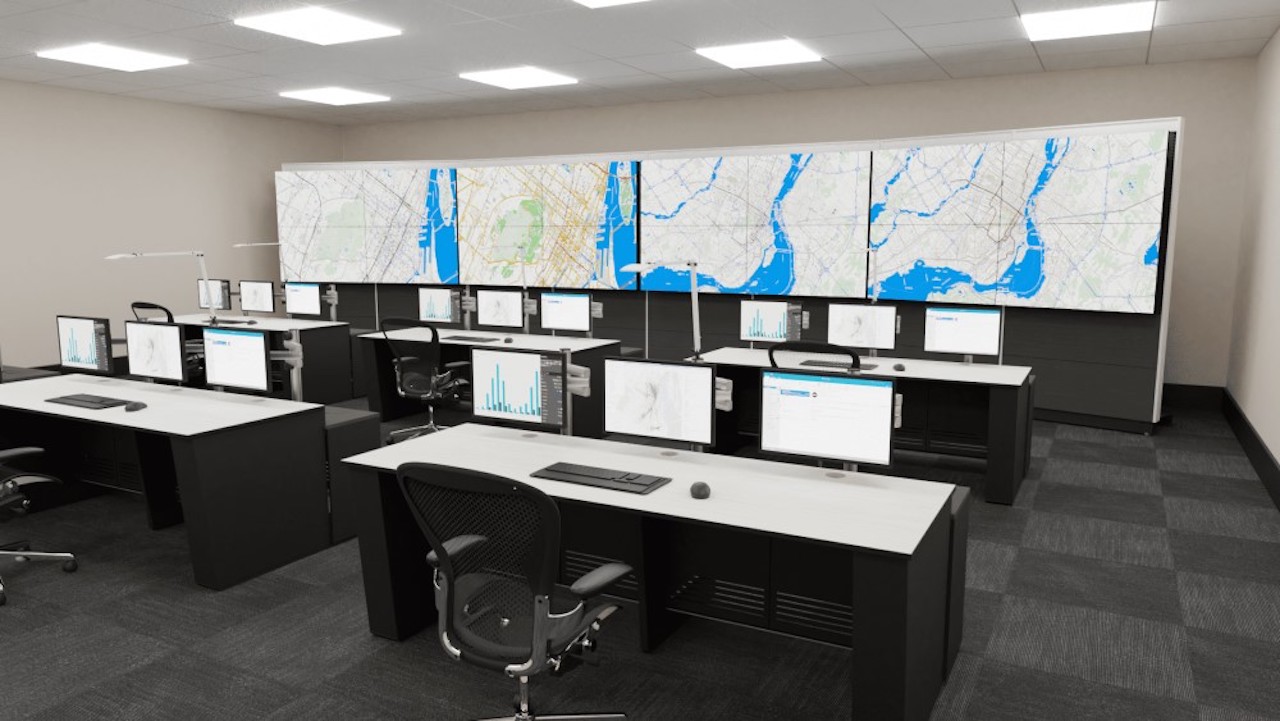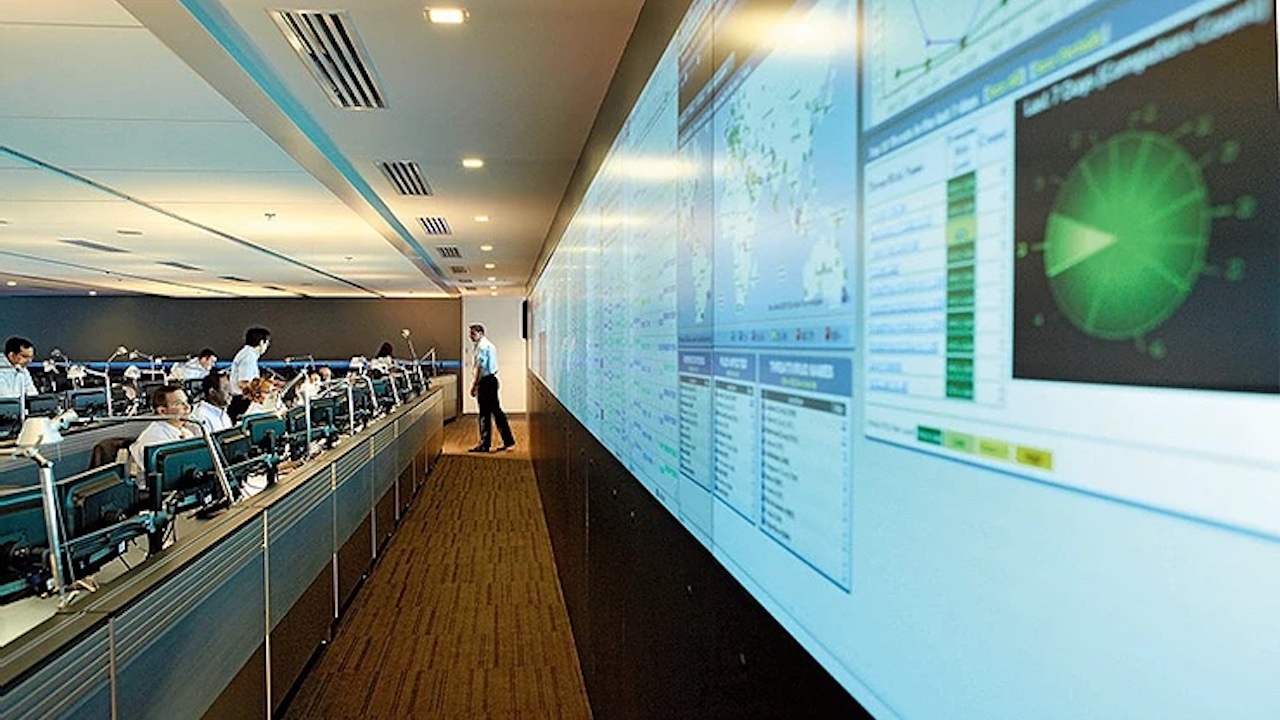Control rooms act like the central nervous system of a facilities. It’s where critical decisions, using complex systems, are made every day. In order to optimize those decisions, operators must be comfortable in their work environment and be equipped with the right tools. This article highlights three key elements to consider in the design of a control room in order to improve operator productivity.
Related: The Technology Manager's Guide to Command and Control
How does increased productivity translate into a control room environment? It can be defined as the operator’s ability to quickly diagnose, react, and resolve abnormal situations in a timely manner. It’s the operators’ ability to detect a problem before a critical point is reached. There are two principal operation modes in a 24/7 control room environment:
Anticipation and Prevention: In control rooms, operators spend most of their time anticipating and preventing critical events from happening. Processes are frequently re-evaluated and adjusted accordingly. To increase productivity in this mode, operators need to stay alert at all times and equipped with the right tools to easily adjust their processes.
Crisis Management: When critical events occur, operators become the frontline of the situation and are expected to properly manage and respond to those high-pressure situations. At this stage, their productivity relies on their ability to quickly respond and react in a timely manner.
Here are the 3 Key Considerations that are essential to increasing control room productivity:
1. Ergonomic Control Room Consoles

Control room operators have highly demanding roles monitoring, controlling, and making daily decisions about complex systems. Considering that most control rooms operate 24/7, 365 days per year, custom-built and ergonomic control room consoles are required to reduce distractions and minimize the risk of human error.
Make Them Stand for Themselves
Operators are often subject to higher stress, fatigue, and anxiety. This is why ergonomic consoles are designed with height-adjustable surfaces to allow operators to stand up, stretch, and adjust their work area as they feel. The memory presets on the sit/stand controller also allow for a faster transition during shift changes as they can be preprogrammed to different heights. Another advantage of height-adjustable workstations is their versatility. For instance, people that are shorter, taller, or with disabilities will have access to the same level of comfort at work. Recognizing the importance of human factors and the need to improve the well-being of operators will help improve response times during critical events.
Give Them Space
Having a clutter-free work environment is a determinant factor to ensure that operators are focused on their job. No phones, no gadgets, no sheets of paper, or other unnecessary objects on the work surface allow for a distraction-free environment. Additionally, dual surface consoles offer the greatest flexibility for users as the primary surface serves as the main workspace, and the secondary surface serves as the support for the monitors. The result is more space to work on. Dual-surface consoles also offer a more comfortable work environment as users can set the position on the primary work surface to comfortably place their forearms, and set the second surface to have a comfortable line of sight to look at the monitors. Additionally, providing operators with storage space to keep their personal belongings and accessories will not only make their workstation more clutter-free, but it will also make the operator feel as they “own” a part of the console.
Make Them Feel Warm
The majority of the complaints in a workspace are related to the ambient temperature and can greatly affect the performance of operators. The reality is that we all respond differently to the temperature in a work environment. As external temperatures fluctuate, our internal body heat will also naturally react and adjust. Most often, the temperature in a facility is centrally controlled and cannot be regulated by operators individually. The personal environment system is a user-friendly touch display that allows operators to set their preferred temperature and lighting directly on their console. With the single touch of a button, operators can choose cool air or a steady flow of heat distributed either above or below the work surface.
Bridge the Gap

Another important aspect to consider when designing the control room floor layout is the way in which consoles are arranged within the space. It is important to take into account both tangible and intangible factors to maximize the workflow of the people in the room. Tangible factors include elements like the furniture dimensions, cable management, and monitor sizes. On the other hand, intangible elements include things like noise, lighting, colors, and the overall atmosphere of the room. Consoles should be positioned to encourage team collaboration, and when applicable, have a clear line of sight to the video wall.
2. Centralized Visualization and Video Wall Management
Envision a scenario where a fully integrated control room facility has synchronized all of its systems in one location to unify efforts during a disaster or major event. The ability for an operator to control any content on the video wall, such as security cameras, media feeds, and geo-mapping location data, is critical to help promote a safer and more accurate response in the field. A centralized, integrated, and interoperable video wall control system enhances the efficiency of teams to work independently and collaboratively with increased visibility on other stakeholders.
A Single Central Platform
Traditionally, the video wall was used as a static display. In the modern control room, the video wall is a dynamic working tool. Operators expect to manage the video wall with the same user experience as they manage their desktops. It must feel like an extension of their desktops. For that, it’s important for solution providers to alleviate the complexity of the technology from the operators so they can focus on their mission in order to increase responsiveness and critical decision-making.

The least number of tools required to configure, manage, and control all visual content in a control room, the better. Ideally, operators only want to learn one user interface for all of their visualization needs, whether to control their desktop or the video wall. Of course, such an interface must:
Be simple and intuitive. It’s important to reduce operator training and allow him to easily configure and operate all his visualization needs, thus increasing his efficiency.
Require no programming. Offer an easy drag and drop interface that doesn’t require any programming to create presets and launch them from a control panel. This way, anybody can do it.
Focus on the Mission
Operators shouldn’t have to worry about technology. They should be able to grab any visual content, whether a camera, an application, or a dashboard, and easily display it on any surface. You would think that’s really obvious, but few video wall controllers are able to process IP, AV, and IT sources simultaneously while handling display surfaces of different resolutions and aspect ratios. This functionality is called hybrid technology: grabbing any source type and visualizing it on any display.
Related: The Technology Manager's Guide to Inspired Video Walls
3. Automation and Unattended Monitoring
The biggest challenge in control rooms is the increasing amount of data: the “Big Data.” With so much information to process, it is impossible for the human eye to catch it all. That’s where automation comes in. Anything that can be automated, should be, in order to increase productivity in control rooms. You can start by reducing repetitive tasks and manual processes. But more importantly, how do you react to alarms and alerts faster? By seeing the most critical sources of information quicker while keeping a birds-eye view of the situation. Here are two ways to increase productivity through visualization automation.
Unattended Monitoring
Most monitoring software systems already have some form of automation. The challenge is the automation between different systems that are not directly related, in order to trigger an event based on a combination of signals from those different systems.

(Example) Traffic Monitoring Center: An alarm might be triggered by a failed traffic light from a traffic light synchronization system and at the same time, a stalled vehicle in the area is detected by a video management system. This combination of events may trigger a more critical response than each of these individually. A system that can process such a combination from multiple independent systems can greatly increase productivity.
How can this be done? This is done with color detection software that is able to detect a change of color on a screen or video wall from a combination of color changes coming from multiple applications at once.
Customized Automation
In a control room, you always need an easy way to program repetitive tasks such as opening a layout on a specific video wall or switching the audio signal to a specific channel, or even readjusting the video wall layouts and room lighting to work shift changes. Such commands should be easily triggered by a button on a control panel. Giving operators the freedom to change layouts and control devices with a simple touch saves time by eliminating repetitive tasks, but also reduces response times in urgent situations.
Related: Preparing for AV-over-IP Control Rooms
Select video wall software that has an easy way to create such macro-commands without the need for programming. The last thing you want is to have to hire a programmer every time your procedures change.
Operators and supervisors should be able to create ad-hoc fully customizable control panels as they encounter new scenarios and as work procedures evolve. The ability to create new panels with new controls anytime without having to call a programmer is key.
Conclusion
The new era of control rooms is a smarter, unified technology system that also takes into account the wellbeing of operators. The result is increased productivity in the control room, with fewer mistakes and a faster resolution of critical events. The effectiveness of sharing and visualizing data in a control room environment can have serious implications as operators need to have the ability to control what they see when they need to see it in order to make better and more informed decisions.
Anna Kozel is director of marketing at VuWall. This piece was co-authored by Asaf Lorenzo, marketing coordinator at Sustema.
